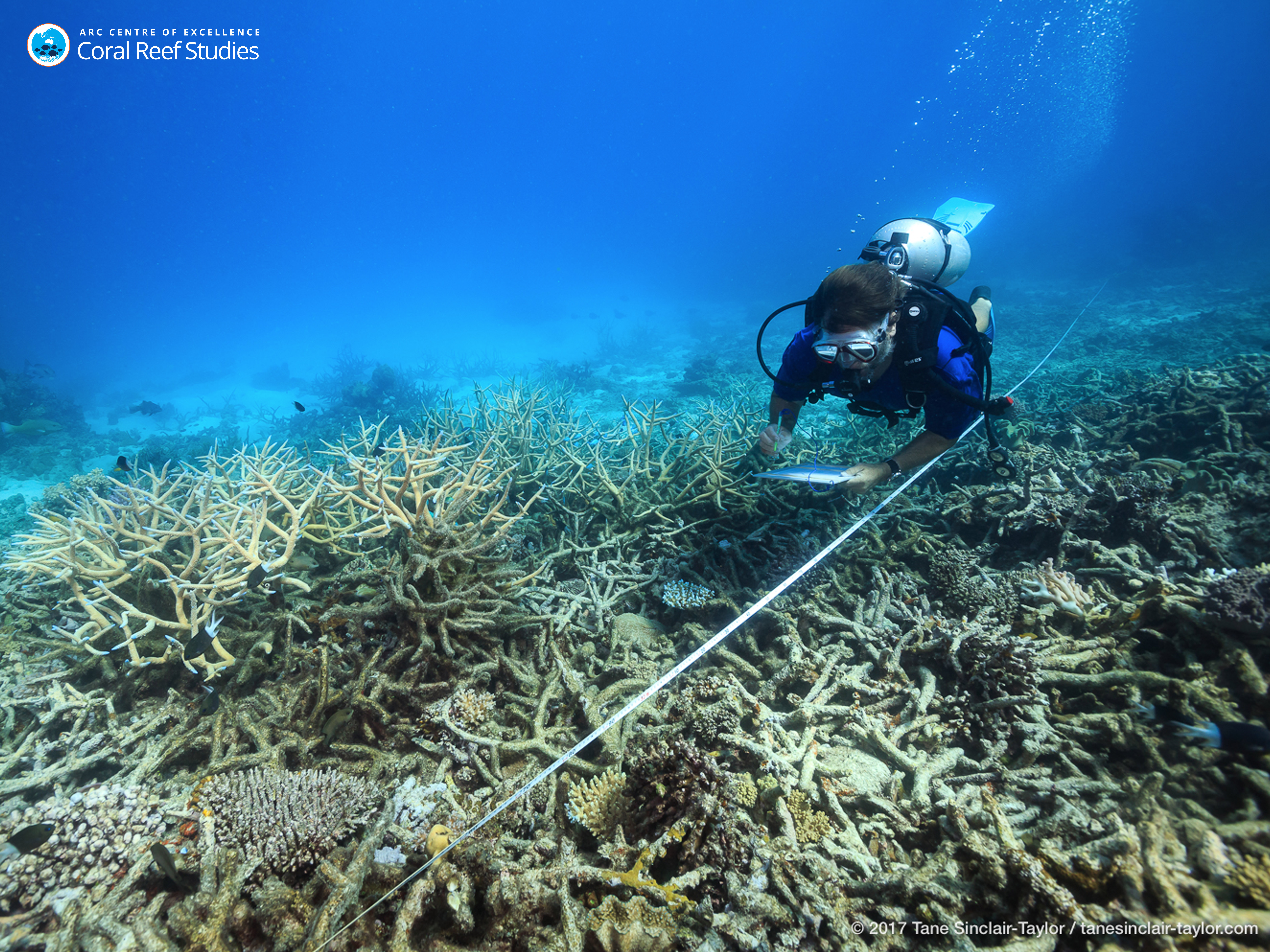Global Warming Is Killing the Great Barrier Reef

Large sections of the Great Barrier Reef are already dead, and scientists warn that the rest of the coral organisms that make up the sprawling reef ecosystem will die if global warming continues unabated.
After a yearof record-high-breaking temperatures in 2016, the Great Barrier Reef experienced its worst coral bleaching event on record, as the tiny coral animals evict their color-giving partners — algae that photosynthesize and are the reason for vibrantly hued reefs. Now, scientists have returned to the reef to measure the coral bleaching that has occurred this summer (which begins in December in the Southern Hemisphere) compared to last summer.
Scientists from 10 research institutions across Australia, representing the National Coral Bleaching Taskforce, will spend the next few weeks conducting air and underwater surveys of the Great Barrier Reef. [Image Gallery: Great Barrier Reef Through Time]
"We're hoping that the next 2-3 weeks will cool off quickly, and this year's bleaching won't be anything like last year," Terry Hughes, lead author of a study describing the team's findings and the convener of the task force, said in a statement. "The severity of the 2016 bleaching was off the chart."
Hughes, who is also a marine ecologist and director of the Australian Research Council Centre of Excellence for Coral Reef Studies, noted that 2016 was the third major bleaching event, and most devastating, to affect the Great Barrier Reef. The catastrophic bleaching last year impacted a region of the reef approximately 500 miles (800 km) in length. (The entire reef is about 133,000 square miles, or 344,400 square kilometers.) Heat waves in 1998 and 2002 also caused massive bleaching of the reef.
Past exposure to bleaching does not make coral reefs any more tolerant to new bleaching events, Hughes said. Once measurements of the bleaching extent this year are completed, they may reveal that 2017 was the fourth major event, Hughes added.
"It broke my heart to see so many corals dying on northern reefs on the Great Barrier Reef in 2016," Hughes said. "With rising temperatures due to global warming, it's only a matter of time before we see more of these events. A fourth event after only one year is a major blow to the reef."
Sign up for the Live Science daily newsletter now
Get the world’s most fascinating discoveries delivered straight to your inbox.
Bleaching occurs when corals are stressed from phenomena such as warmer-than-average waters for an extended period of time. In response, corals, which are actually little organisms called coral polyps, expel the algae that lend them their color and provide them with food. This gives the coral a bleached appearance, and if bleaching continues for too long, the algae may not be able to recolonize the coral.
Though overfishing and poor water quality can also stress coral reefs, climate change — and the resulting warmer oceans — is the leading cause of bleaching, said study co-author David Wachenfeld, director of reef recovery at the Great Barrier Reef Marine Park Authority.
"Global warming is the No. 1 threat to the reef," Wachenfeld said. "The bleaching in 2016 strongly reinforces the urgent need to limit climate change as agreed by world leaders in the Paris Agreement, and fully implement the Reef 2050 Plan to boost the reef's resilience." (The Reef 2050 Plan aims to sustain and conserve the Great Barrier Reef, including annual reef health reports and denying development projects that might harm the reef.)
Details of their research on the Great Barrier Reef bleaching events were published online yesterday (March 16) in the journal Nature.
Original article on Live Science.











